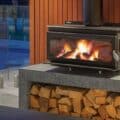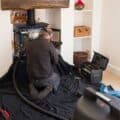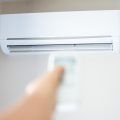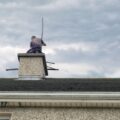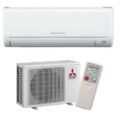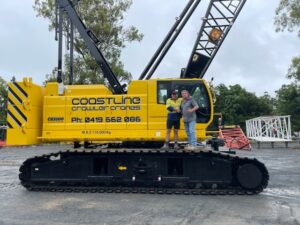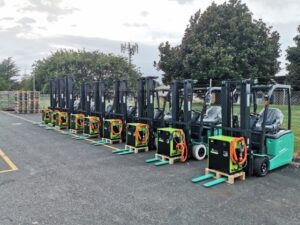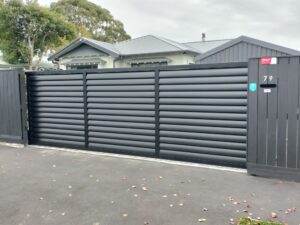There’s a common mistake many Wellington homeowners make when it comes to their fireplaces—and it ends up costing more than it should. Whether it’s a well-used wood burner in Lyall Bay or a decades-old built-in fire in Karori, the moment something feels off—lower heat, odd smells, damaged firebricks—many choose to delay action or patch it themselves.
It seems harmless, but in practice, it’s the fastest way to turn a repair into a full replacement. If your fireplace is showing signs of wear, the safest and most cost-effective next step is to schedule professional fireplace repairs in Wellington with a team that knows how to extend its life and performance.
Whether you’re dealing with cracked seals, a worn baffle, or something more complex, what you do next can make all the difference. Don’t make the mistake of assuming it’ll sort itself out. It won’t.
Key Takeaways
- Delaying fireplace repairs almost always results in higher costs later. A minor seal or firebrick issue today could become a full unit replacement in six months.
- There’s a clear difference between failing components and a failing fireplace. Knowing when repair makes sense—and when to walk away—is key.
- Wellington’s coastal and windy climate accelerates wear. Salt air and moisture are hard on fireplaces, even in well-sealed homes.
- Proper servicing is the best protection. Regular professional maintenance prevents small faults from escalating.
- Repairs done by certified experts protect warranties and compliance. DIY fixes often void coverage and lead to repeat failures.
The Real Cost of Waiting Too Long
When a fireplace starts to decline, the damage rarely stops on its own. Maybe it starts as a faint whistle from a loose door seal or a few extra logs needed to heat the same room. Small signs. But inside the firebox, that loose seal lets in excess oxygen, which fuels hotter, uneven burns. Over time, that heat warps your baffle, cracks firebricks, and corrodes the air bar.
Now, instead of a $220 service visit and a couple of parts, you’re looking at a full replacement—potentially over $5,000, depending on the model and installation complexity. And if you’ve let it go too long? There may be safety issues as well.
It’s a slippery slope from “small fix” to “complete reinstall,” especially in a region like Wellington where fireplaces see heavy seasonal use and face harsh environmental exposure. Being proactive can save thousands.
Repair or Replace? What to Consider
Many homeowners don’t realise how often fireplaces can be repaired. Too many opt to replace units prematurely—or worse, sink money into repairing something that’s already at the end of its life.
When Repair Makes Sense:
- The firebox is intact, and the core structure is sound.
- Damage is isolated to components like seals, firebricks, baffles, or the flue.
- The fireplace is under 15 years old and has been regularly serviced.
- The model still meets current compliance and efficiency standards.
When Replacement Is Smarter:
- The fireplace has visible corrosion or warping in the frame or body.
- Efficiency has dropped significantly even after repairs.
- The unit no longer complies with local clean-air regulations.
- You’re already spending money annually to patch failing parts.
How Long Should a Fireplace Last in Wellington?
In a controlled environment, a well-maintained wood burner should last between 15 to 20 years. But Wellington is no ordinary environment. Between salt-laden air in coastal suburbs like Island Bay and the near-constant wind exposure in hillside properties, wear accelerates faster than many expect.
If your fireplace was installed more than 12–15 years ago, it’s time for a professional assessment. That doesn’t always mean replacement—but it does mean looking closely at efficiency, safety, and compliance with today’s regional standards.
Homeowners in Kapiti and Wellington often see early breakdowns in airbars, firebricks, and seals due to higher burn rates during colder months. These parts are serviceable—but ignoring them shortens the entire unit’s life.
What Professional Fireplace Repairs Actually Involve
Many think a fireplace repair is as simple as swapping out a part or sealing a gap with fireproof cement. But proper servicing involves a complete evaluation. Certified technicians don’t just fix what’s broken—they assess why it failed and whether surrounding components have been affected.
A professional repair typically includes:
- Inspection of all internal and external components
- Assessment of airflow efficiency and heat output
- Checking the integrity of the baffle, firebricks, and seals
- Cleaning of ash buildup and flue obstructions
- Replacement of worn or damaged parts with certified components
- Review of compliance with emissions and safety standards
This is where the value lies. You’re not paying for a “patch job”—you’re paying for long-term assurance that your fireplace will run safely and efficiently for years to come.
When Upgrading Beats Repairing
If your fireplace is reaching the end of its life, investing in repairs may be more expensive in the long run than simply upgrading. Today’s modern wood burners—like the Stûv or Wagener models offered by Kapiti Woodfires—are far more efficient, easier to clean, and less prone to the types of part failures older units suffer from.
These models meet and exceed clean-air compliance requirements for the Wellington region, and many qualify for support under the Warmer Kiwi Homes programme or local council incentives. In some cases, upgrading can reduce your wood use by up to 30% annually—saving you hundreds in firewood while producing more consistent heat.
The Wrong Fix Can Void Your Warranty
One of the most overlooked risks of DIY fireplace repairs—or using an uncertified technician—is warranty loss. Most reputable brands require certified installation and servicing to maintain their coverage. Even minor things like using an aftermarket firebrick or sealing a flue without clearance testing can void it.
Worse, these shortcuts often result in repeat failures, or more dangerously, fire hazards. Insurance claims tied to non-compliant fireplaces are commonly rejected. If there’s any doubt, always go with a certified repair provider—especially in Wellington, where regional standards are strict and enforcement is increasing.
Make the Right Call Before Winter Hits
The best time to act is always before the cold weather arrives. That’s when bookings are still available, prices are standard, and problems haven’t yet turned into crises. If you’re unsure whether your fireplace needs repair or replacement, the first step is always a professional inspection.
Kapiti Woodfires offers full service and maintenance across Wellington, Kapiti Coast, and Horowhenua. Their experienced team can identify repairable issues, provide cost-effective fixes, or walk you through replacement options if it makes more sense. Either way, you’re getting clear advice—not a sales pitch.
Don’t Wait for Your Fireplace to Fail
The mistake Wellingtonians make isn’t using their fireplaces heavily—it’s ignoring the early signs when things go wrong. What starts as a small issue becomes a big problem if it’s left to fester. But most repairs are affordable, quick, and simple to fix—when handled early by the right team.
Know the difference between a worn-out part and a worn-out system. Know when it’s time to repair—and when it’s smarter to upgrade. And above all, don’t leave it too late. A warm, safe, and cost-effective winter starts with taking action today.

